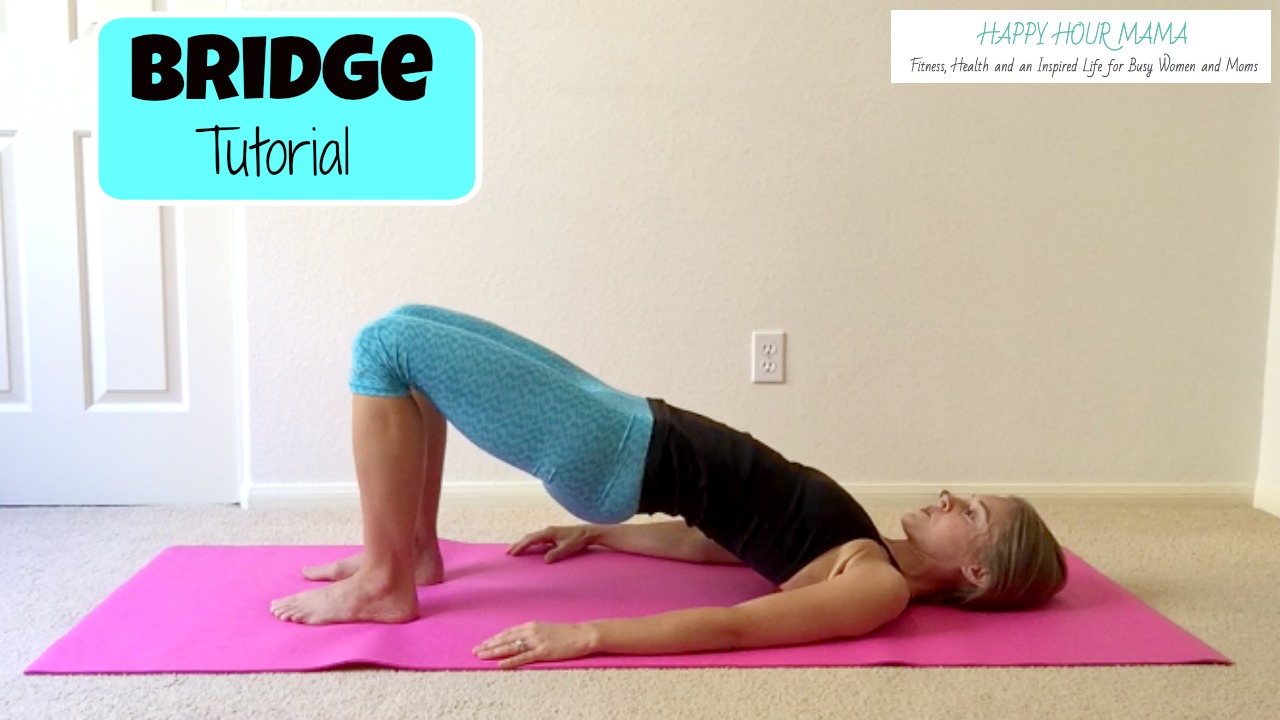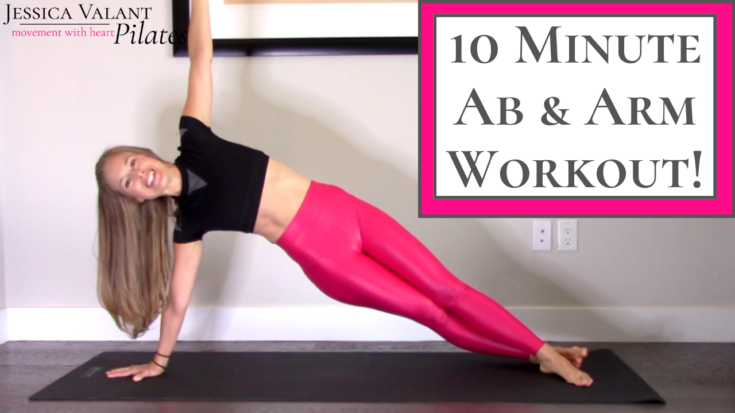If you’ve done any of my workout videos (hopefully you have!), you most likely have done a Pilates bridge exercise.
Or many of them.
I LOVE bridges and tend to include them – or a variation of them – in most workout classes I teach!
While the movement of lifting the hips up and down while lying on your back may seem basic, the bridge is actually a powerhouse of an exercise that can benefit people with back pain, professional athletes and everyone in between.
Why are bridges so amazing?
I’m glad you asked!
Here are 9 reasons you should do bridges every day
It tightens your buns and legs
Did you know that stronger glutes not only make you look better in your jeans, but also help contribute to your overall health? Many people with low back, hip and knee pain have weak gluteal muscles. The bridge is one of the best exercises to help target and isolate these important muscles.
It improves posture
You are most likely reading this on your computer or mobile device right now. That means you are probably leaning forward, rounding your shoulders and your back. Most of us sit this way throughout the day, which can cause headaches, weakness and tight muscles from our poor posture! Bridging strengthens the back extensors, which can help us stand up straighter.
It can be done laying down
Squats are a very popular and effective exercise for strengthening leg muscles, but there are many people who are unable to do a traditional squat due to back, knee or hip pain. The bridge allows a person to strengthen these muscles in a position that doesn’t put pressure on their joints.
It decreases back pain
Back pain many times can be caused by poor movement of the spine. It can lead to weak hip and abdominal muscles. All of these issues are addressed with a bridge exercise. The focus on the core and surrounding musculature can help support and strengthen the low back, leading to decreased pain. Not only that, but regular strengthening with bridges can help prevent back pain in the future!
It enhances sports performance
Most physical activities – including running, hiking, cycling, sprinting, and jumping – require strong gluteal muscles. Most people don’t realize they have weak glutes until an injury sidelines them from their sports. Bridges can help strengthen all the posterior chain muscles, which can lead to decreased chance for injury and improved sports performance.
It helps prevent knee pain and injury
Knee pain can be a direct result from muscle imbalances in the hips, including weak inner and outer thighs and glutes. Bridging helps strengthen these muscle groups without putting added pressure on the knees. This muscle balance can lead to better tracking of the kneecap and a decreased chance of osteoarthritis in the knees.
It helps with scoliosis
Bridges are one of my favorite exercises I give to my physical therapy patients who have scoliosis. Scoliosis is a curvature of the spine and causes an imbalance in movement of the vertebrae and the muscles that surround the spine. Bridging not only strengthens, but also can return proper movement to the spine, which can help the pain associated with scoliosis. I especially love the variation that involves moving one vertebrae at a time. This can be seen in the video below.
It feels good
A bridge is considered a type of inversion exercise because your heart is lifted higher than your head as you lift your hips. Inversions have been shown to increase blood flow, which can help balance hormones and release endorphins. All of this can lead to peace of mind, better sleep and improved mood!
It improves balance
Bridging works the muscles of the posterior chain of the body. These include the back extensors, gluteals and hamstrings. These muscles play a vital role in our ability to both maintain our balance and regain our balance when we start to fall. Strengthening the posterior chain will help improve balance when standing.
If you want to lift your buns, decrease pain, improve your health and prevent injuries, add bridges to your exercise routine! I’m including two exercise videos to help you get started.
The first one is a short video talking you through 3 different variations of the bridge. This is a basic tutorial that can be used for beginners or people with injuries and can help get you started with bridging. If you have low back pain, check out this video as well!
This second video is a more advanced workout that will target legs and buns! It uses a variety of bridging exercises to tighten and tone your backside.
Remember to always check with your doctor before starting a new exercise routine. Also, stay tuned this month as we have a really exciting announcement coming that will allow you to receive even more workout videos and injury tips!




